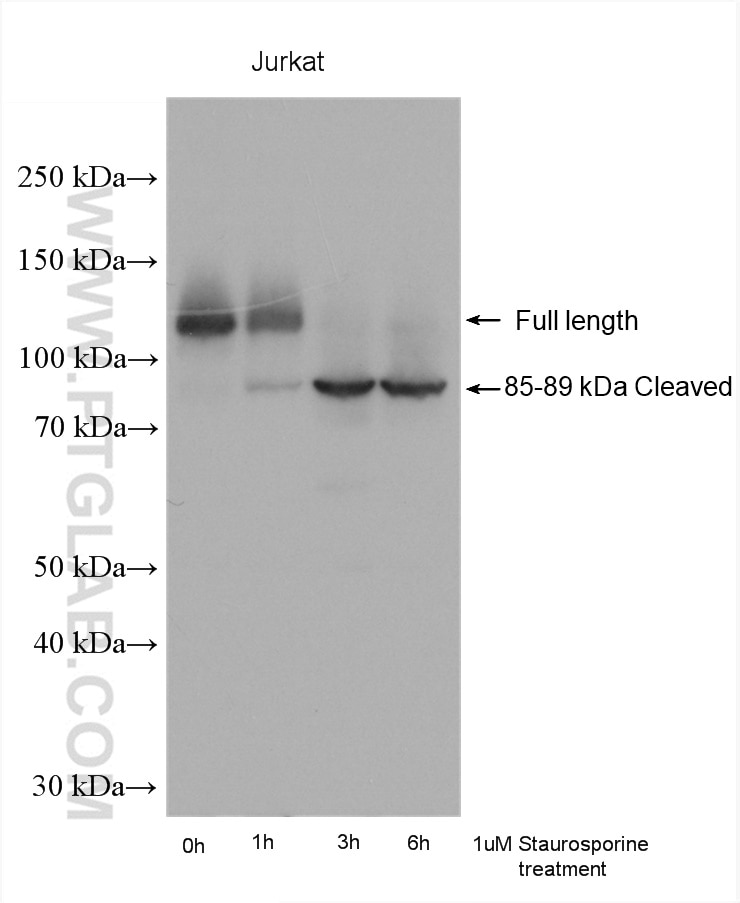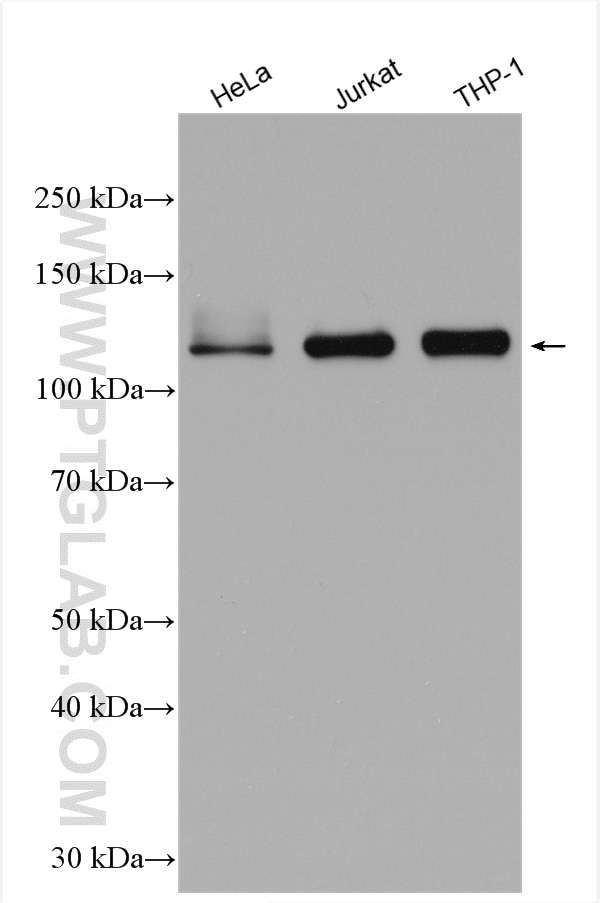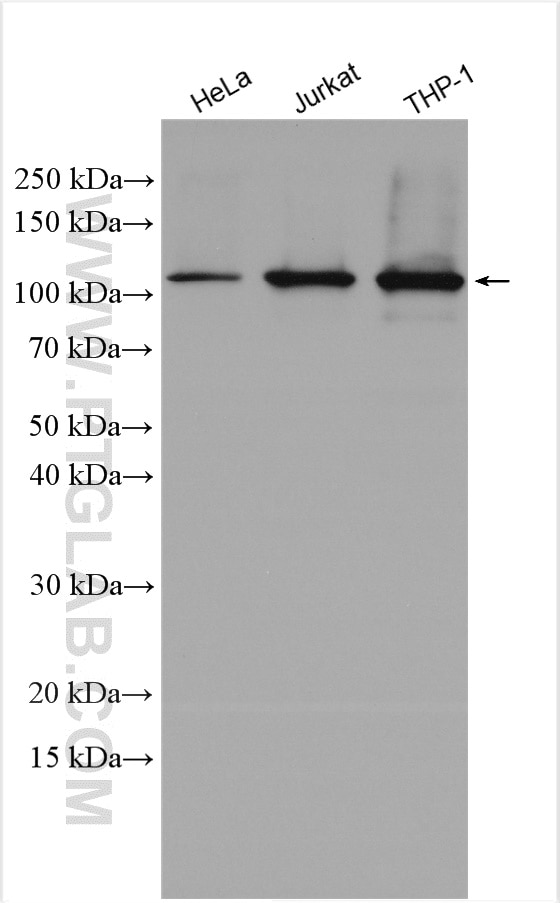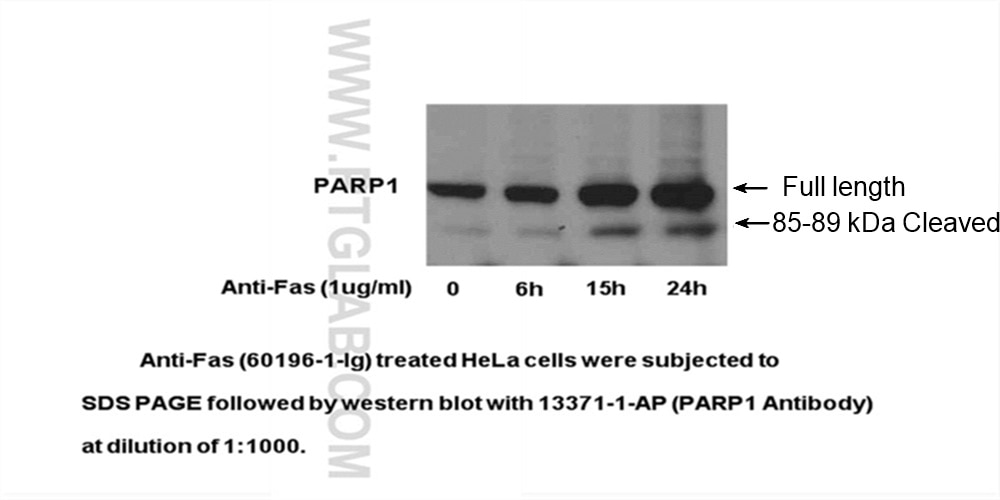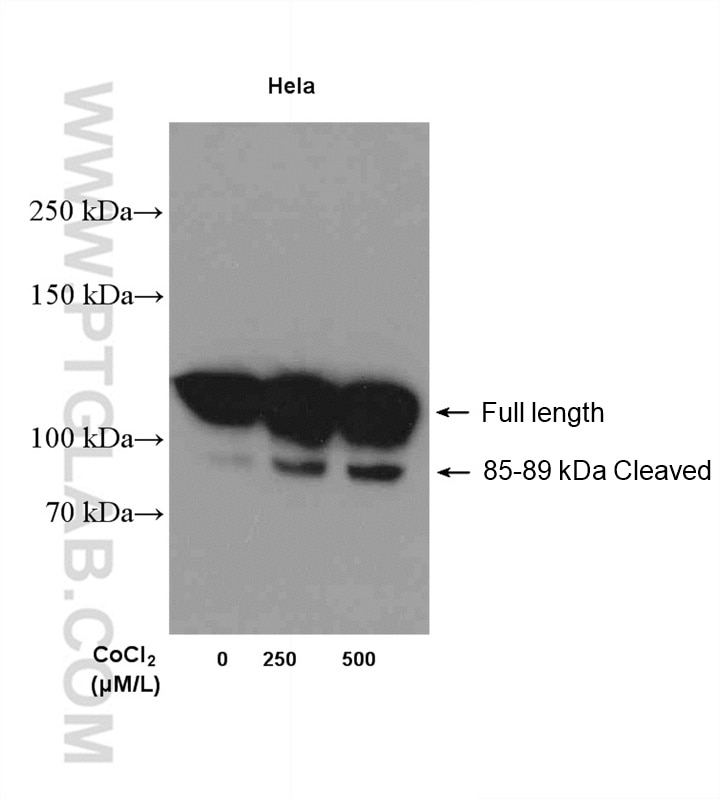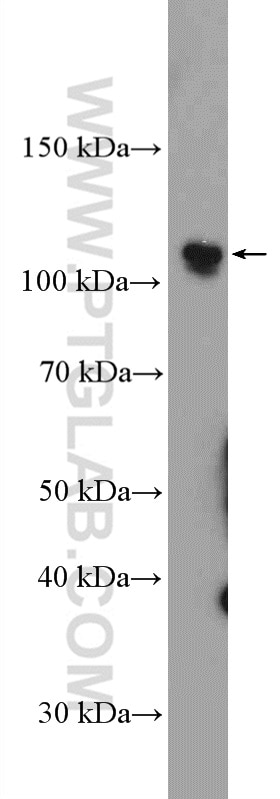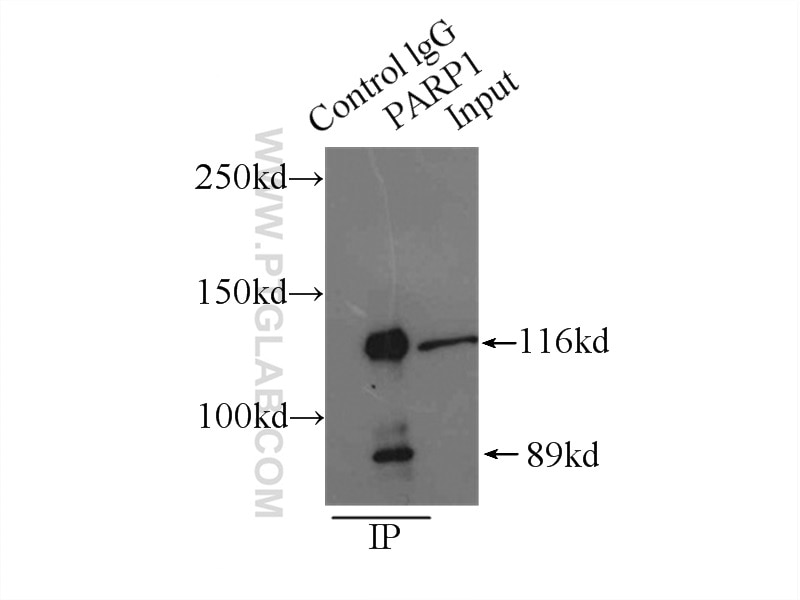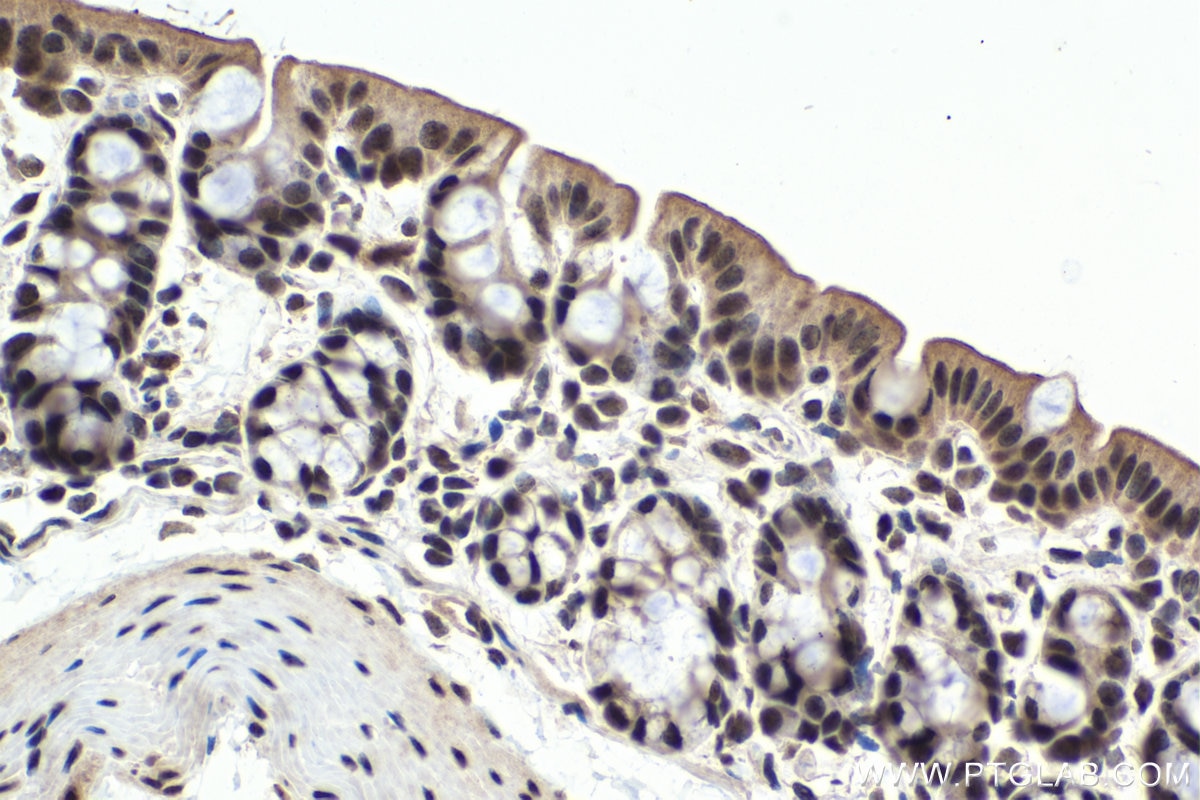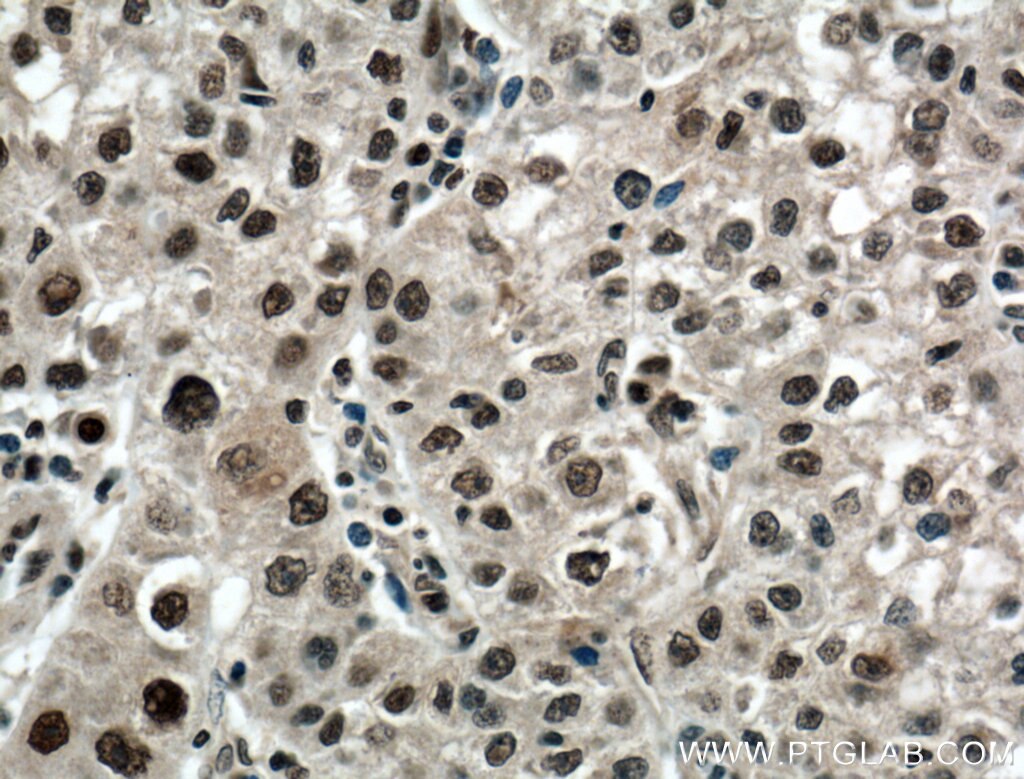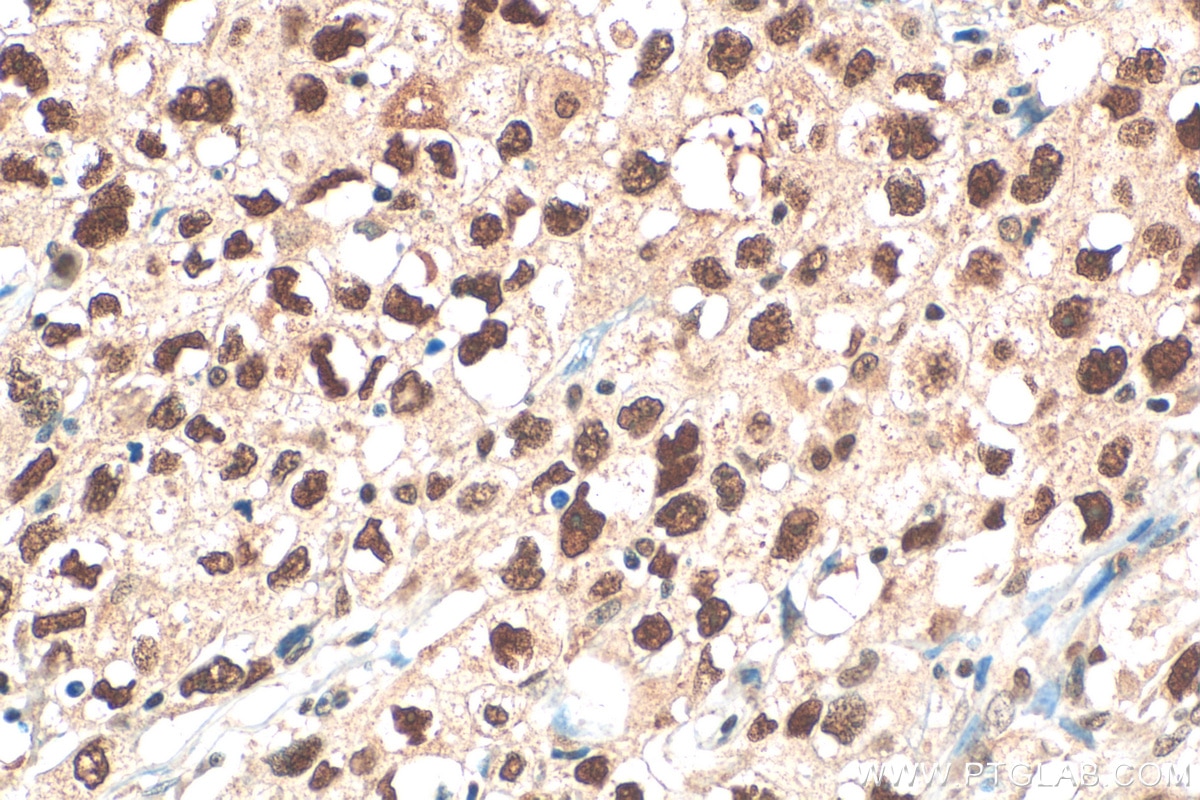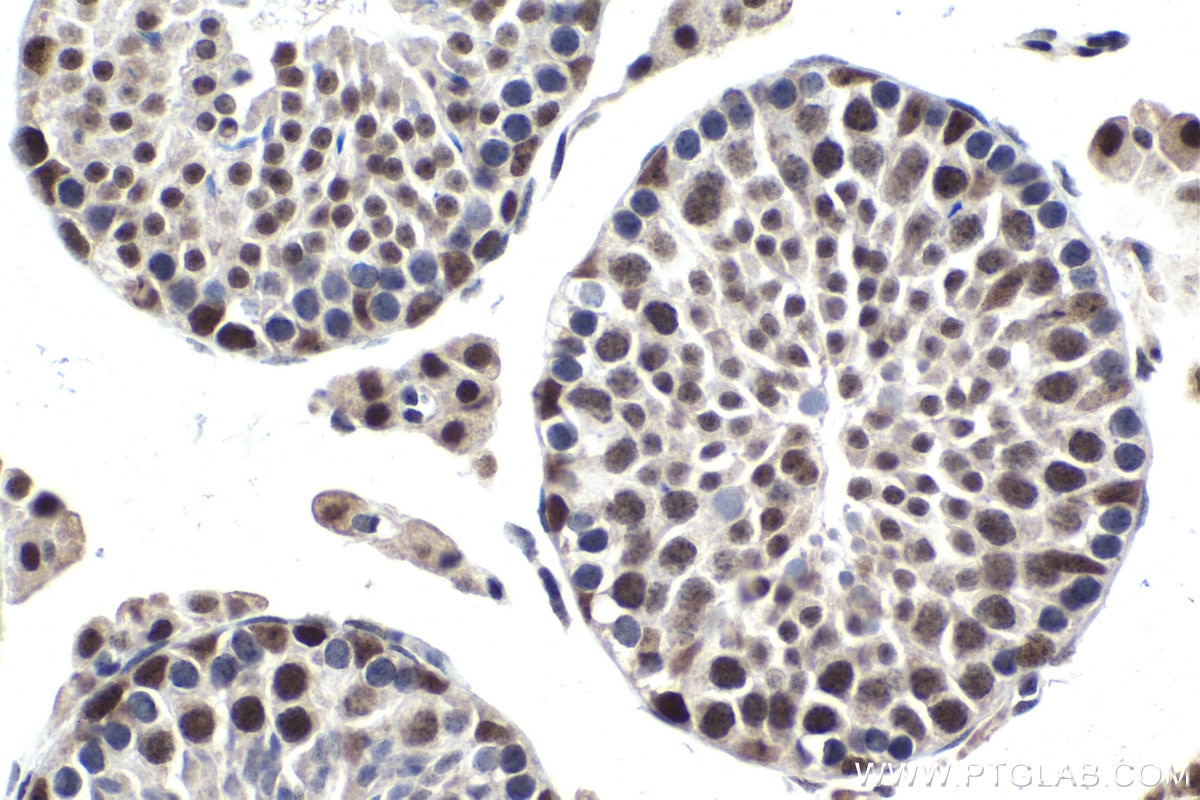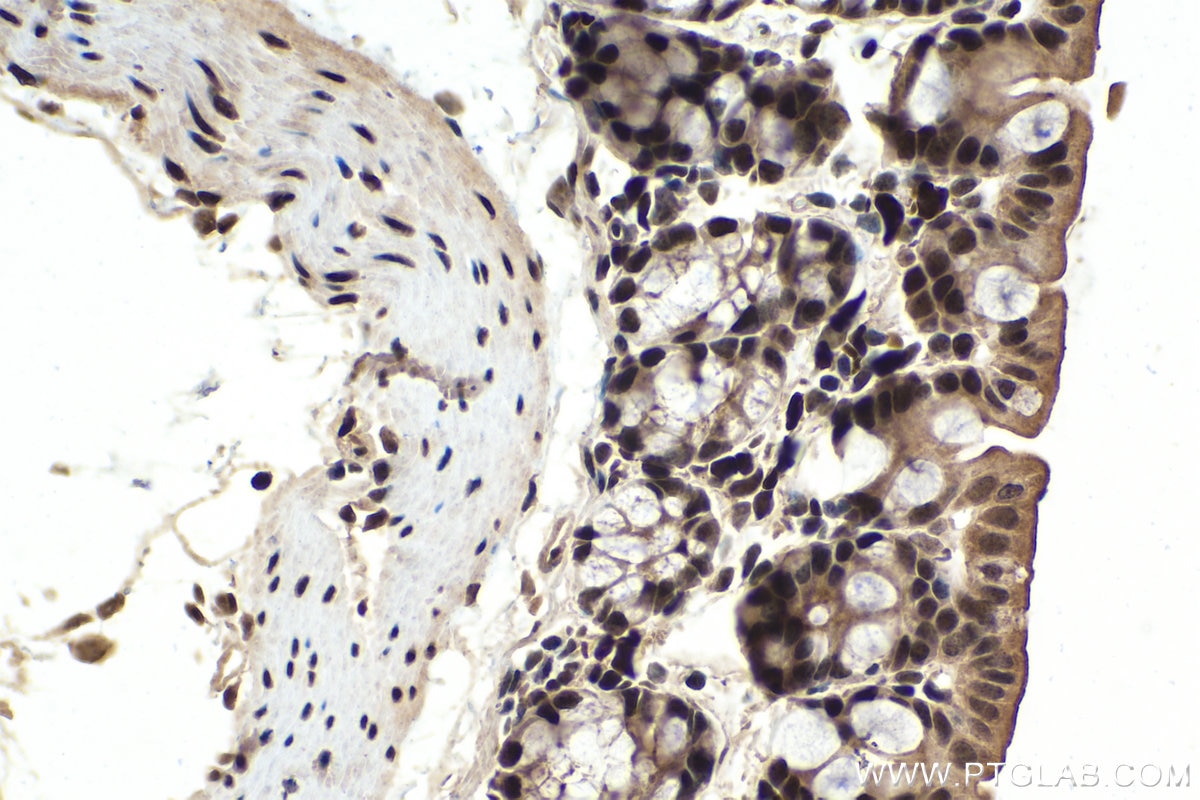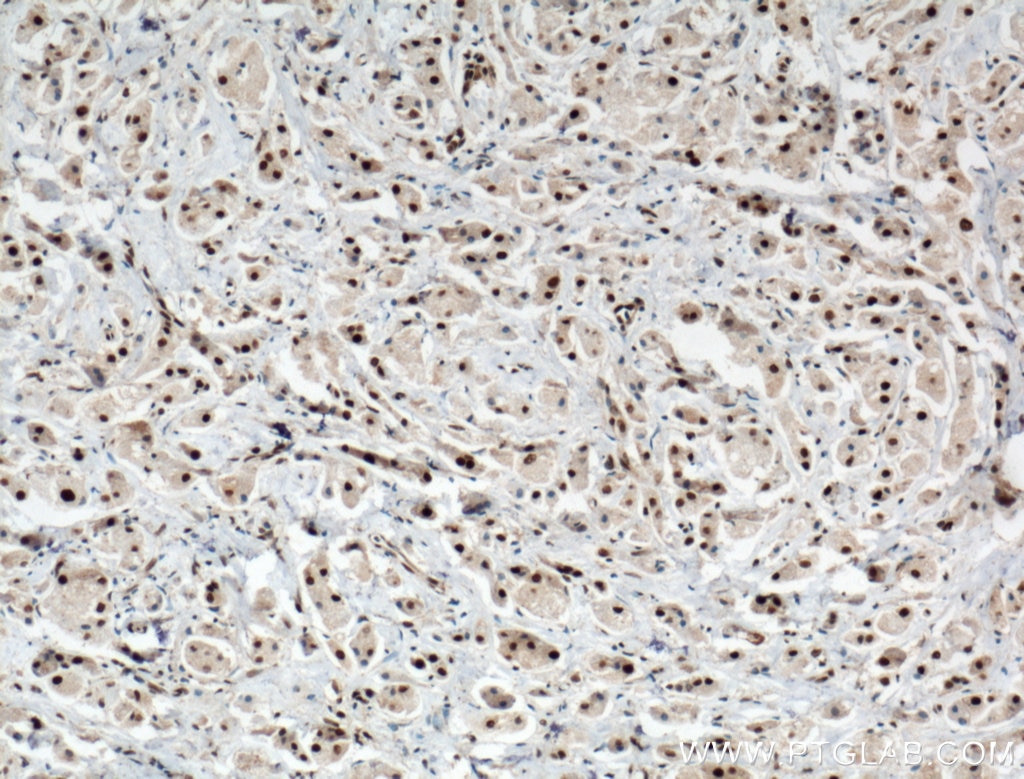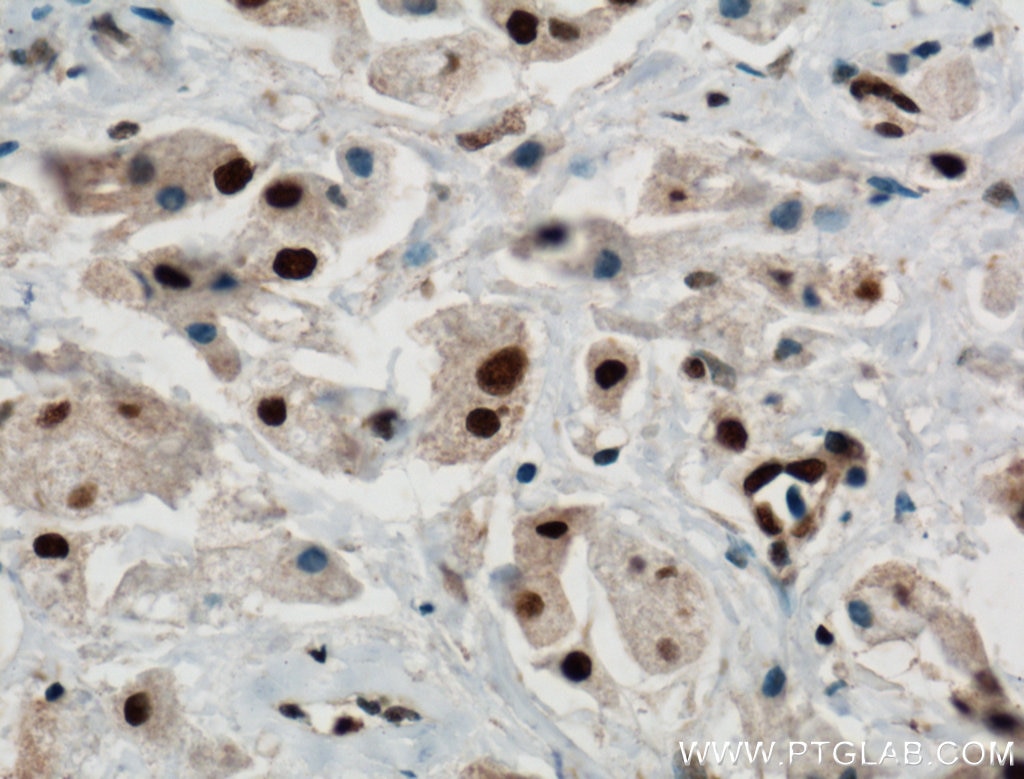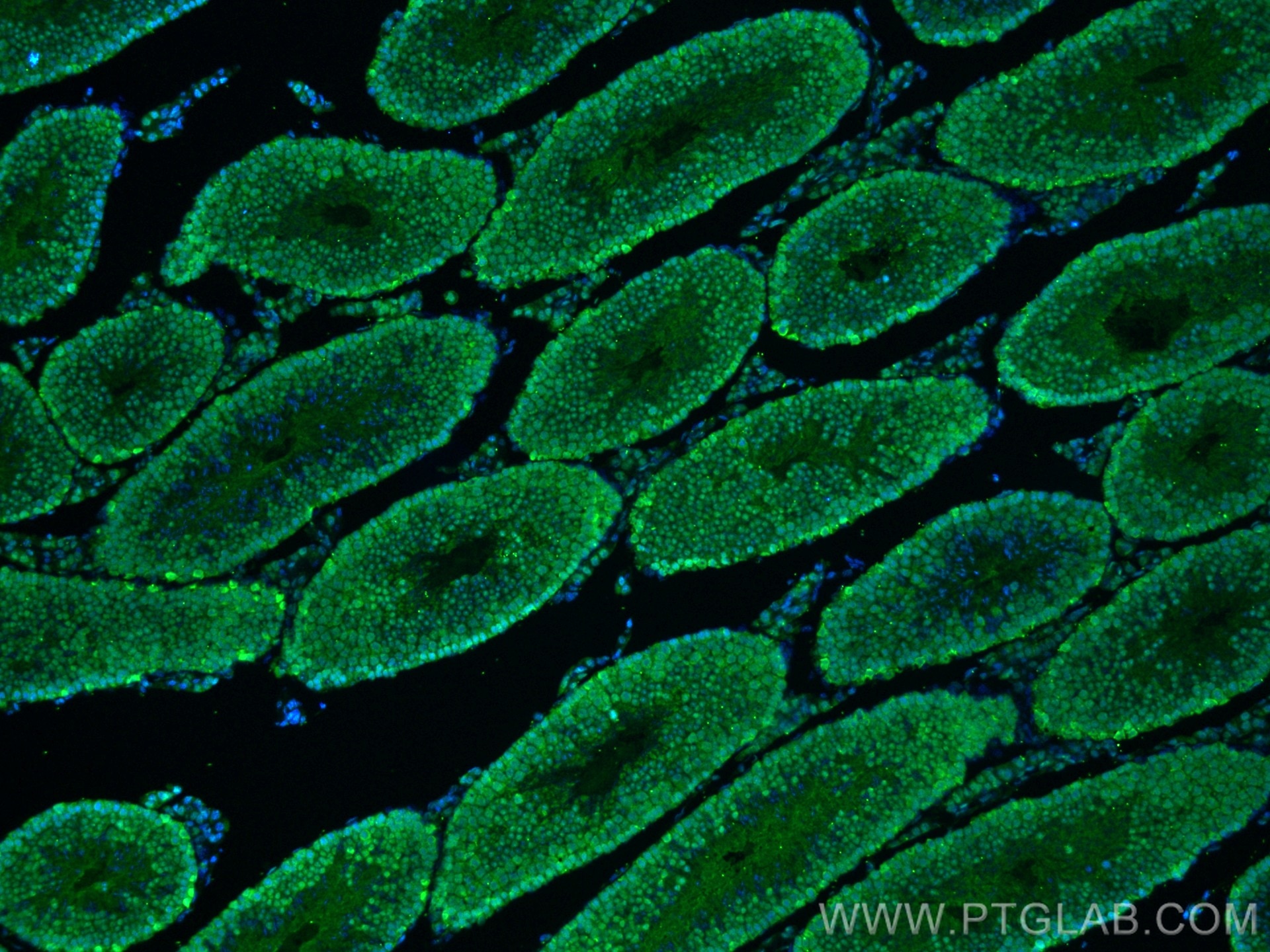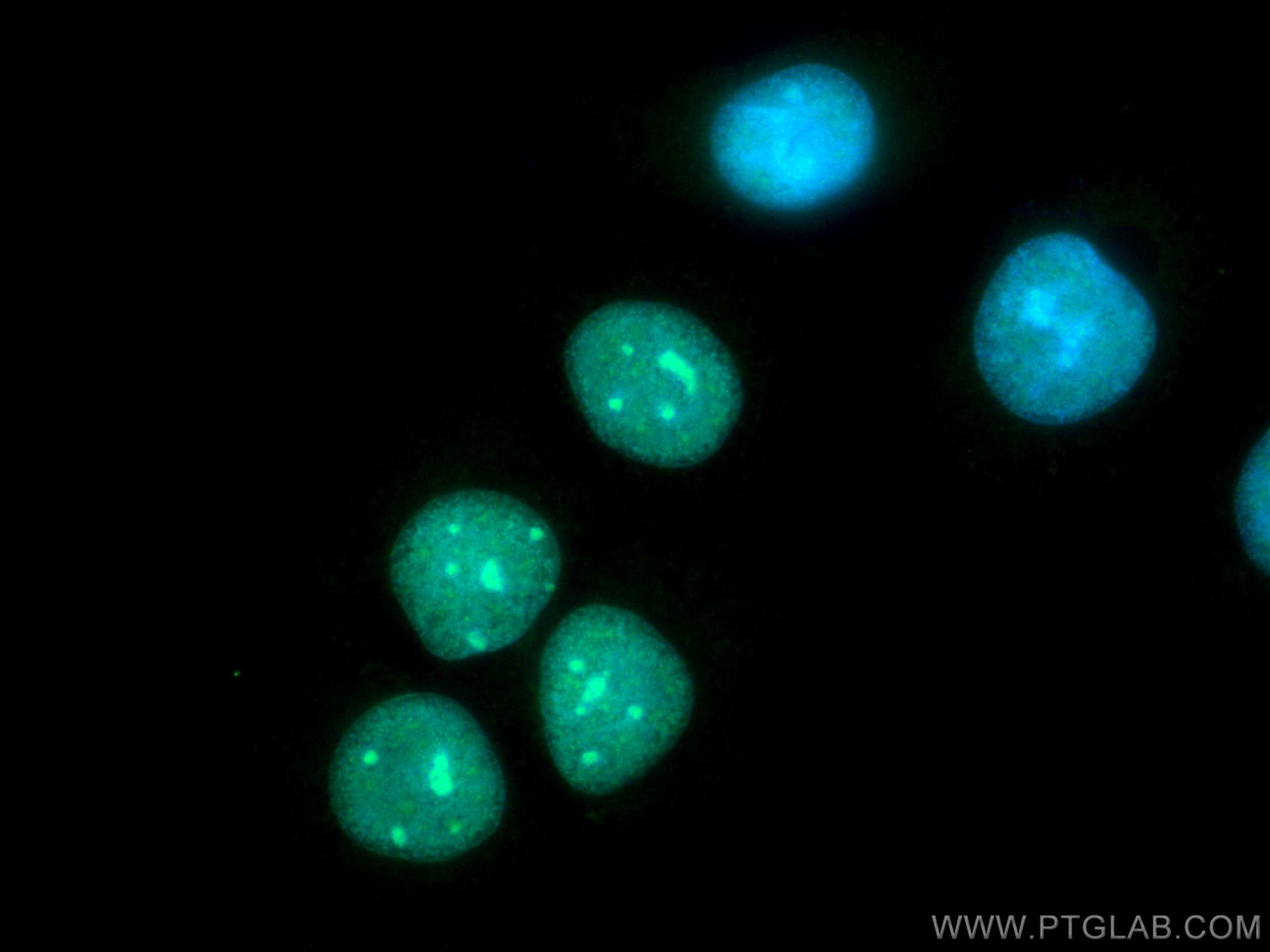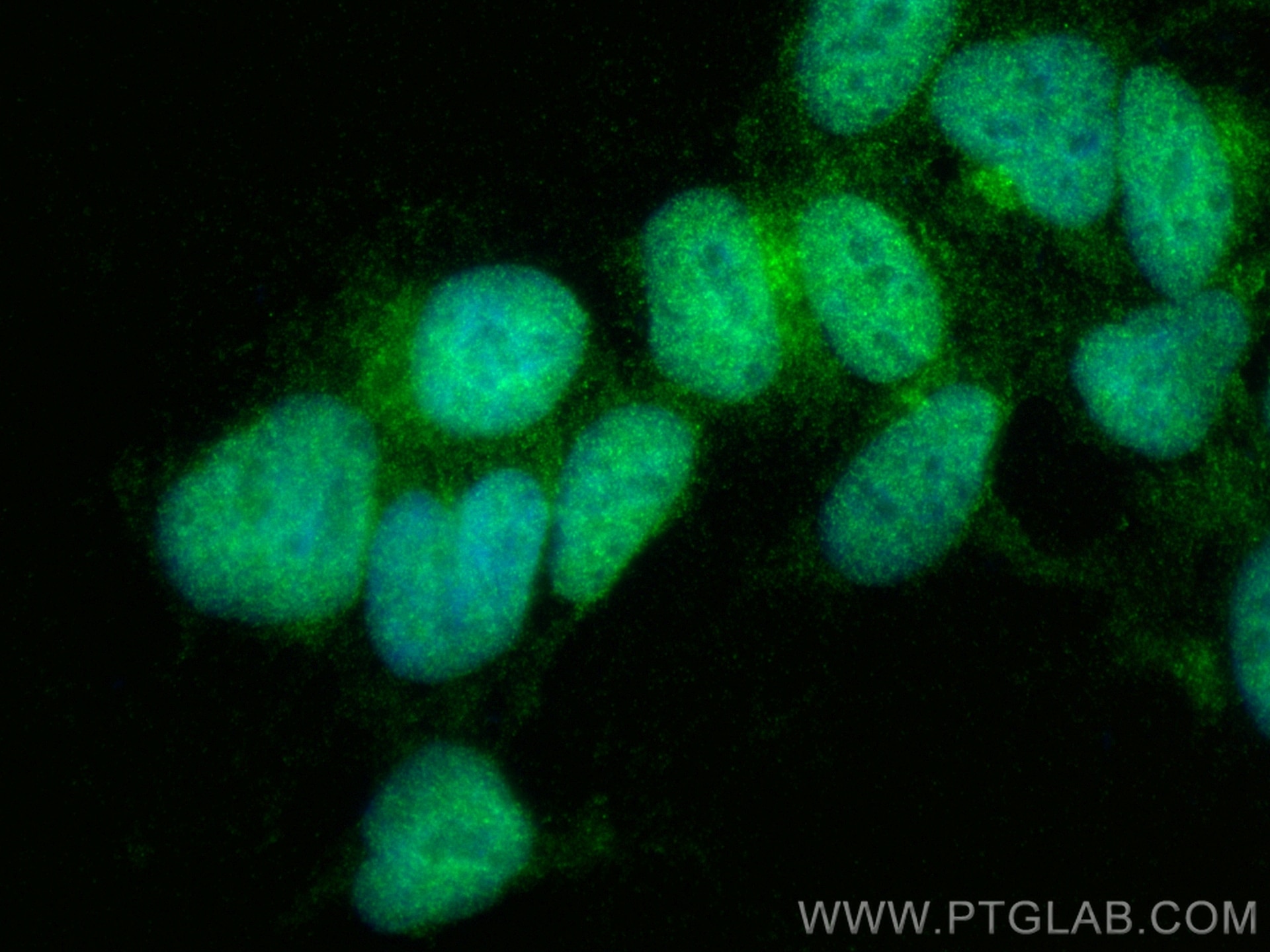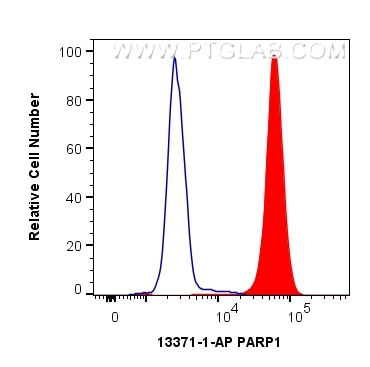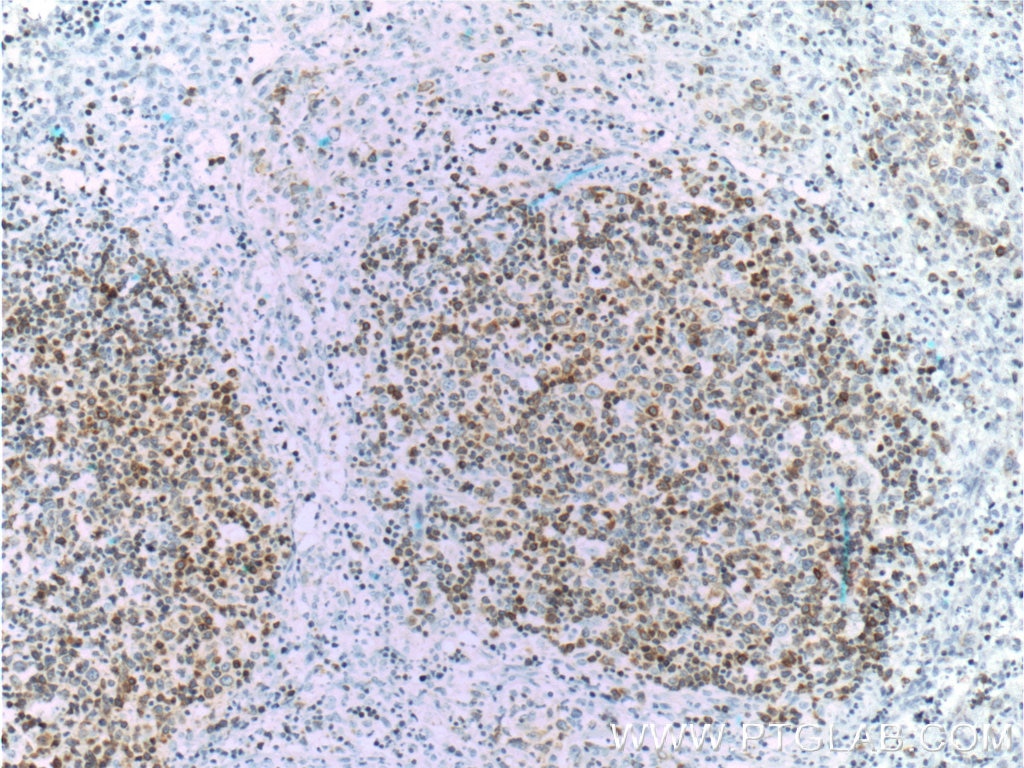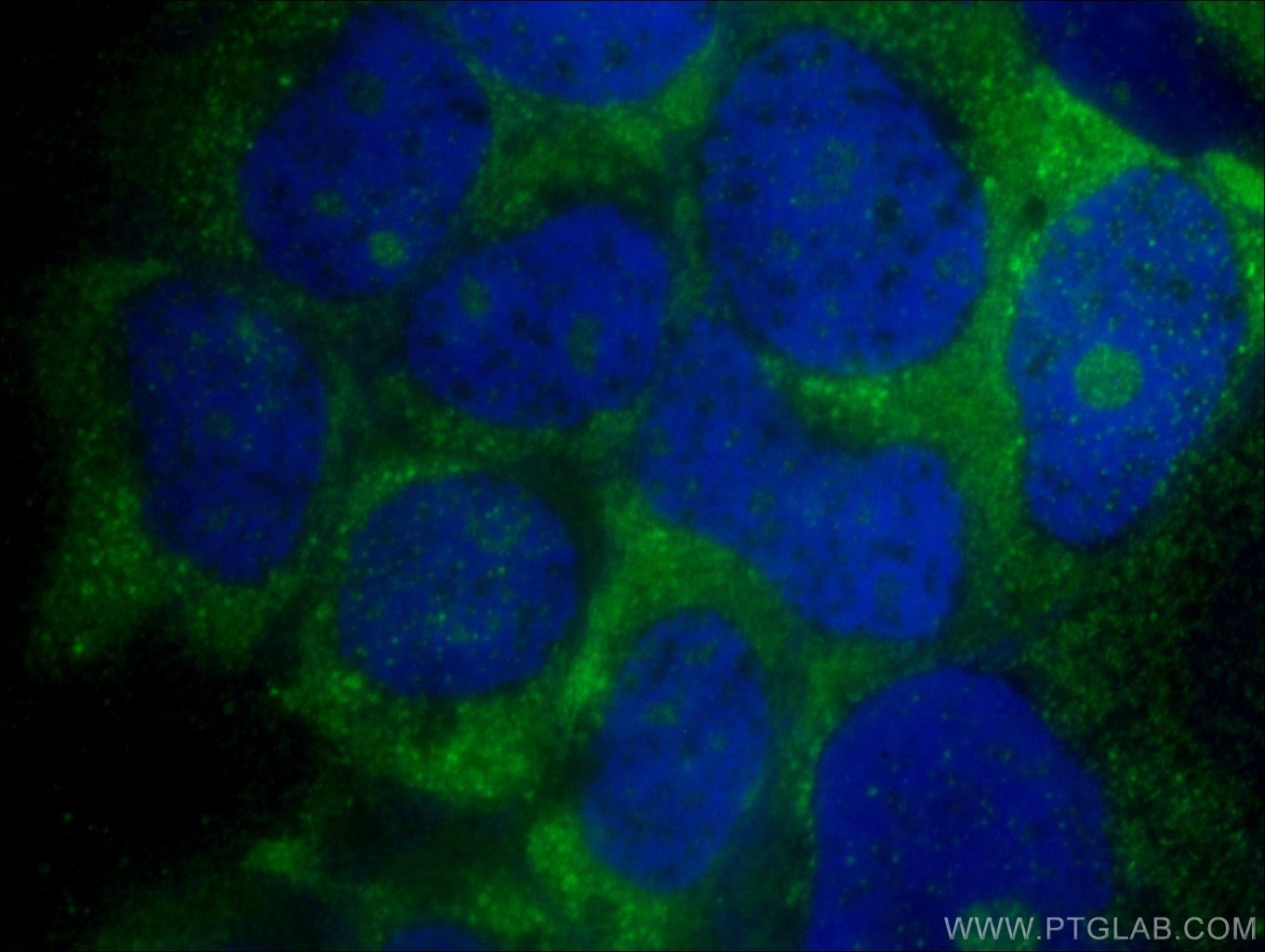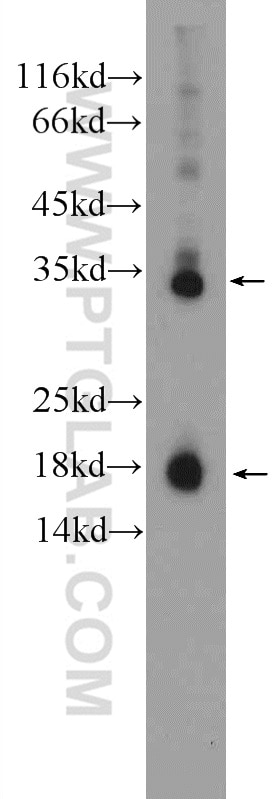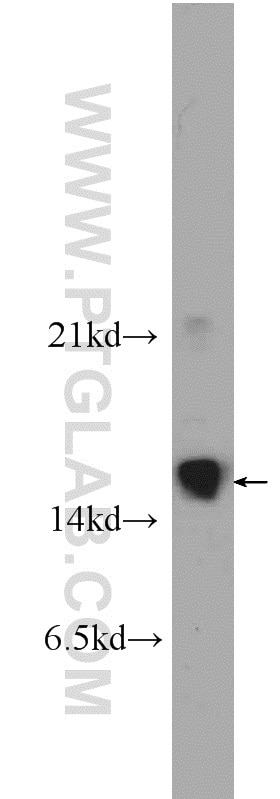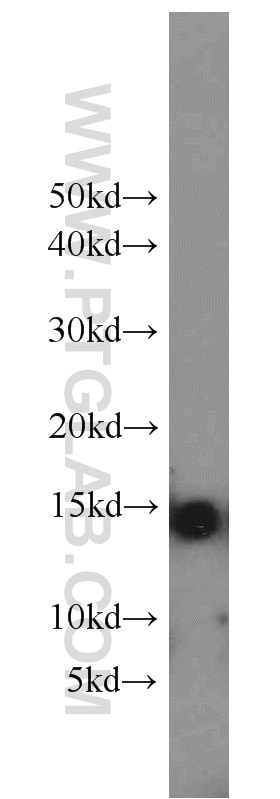- Phare
- Validé par KD/KO
Anticorps Polyclonal de lapin anti-PARP1
PARP1 Polyclonal Antibody for WB, IHC, IF/ICC, FC (Intra), IP, ELISA
Hôte / Isotype
Lapin / IgG
Réactivité testée
Humain, rat, souris et plus (5)
Applications
WB, IHC, IF/ICC, FC (Intra), IP, CoIP, ChIP, ELISA
Conjugaison
Non conjugué
604
N° de cat : 13371-1-AP
Synonymes
Galerie de données de validation
Applications testées
| Résultats positifs en WB | cellules HeLa, cellules C6, cellules HeLa traitées à l'anticorps Fas, cellules HeLa traitées au chlorure de cobalt, cellules Jurkat, cellules THP-1 |
| Résultats positifs en IP | cellules K-562 |
| Résultats positifs en IHC | tissu de côlon de souris, tissu de cancer du foie humain, tissu de cancer du poumon humain, tissu de cancer du sein humain, tissu testiculaire de souris il est suggéré de démasquer l'antigène avec un tampon de TE buffer pH 9.0; (*) À défaut, 'le démasquage de l'antigène peut être 'effectué avec un tampon citrate pH 6,0. |
| Résultats positifs en IF-P | tissu testiculaire de souris, |
| Résultats positifs en IF/ICC | cellules HEK-293, cellules MCF-7, tissu testiculaire de souris |
| Résultats positifs en FC (Intra) | cellules K-562, |
Dilution recommandée
| Application | Dilution |
|---|---|
| Western Blot (WB) | WB : 1:1000-1:8000 |
| Immunoprécipitation (IP) | IP : 0.5-4.0 ug for 1.0-3.0 mg of total protein lysate |
| Immunohistochimie (IHC) | IHC : 1:1000-1:4000 |
| Immunofluorescence (IF)-P | IF-P : 1:50-1:500 |
| Immunofluorescence (IF)/ICC | IF/ICC : 1:50-1:500 |
| Flow Cytometry (FC) (INTRA) | FC (INTRA) : 0.40 ug per 10^6 cells in a 100 µl suspension |
| It is recommended that this reagent should be titrated in each testing system to obtain optimal results. | |
| Sample-dependent, check data in validation data gallery | |
Applications publiées
| KD/KO | See 5 publications below |
| WB | See 574 publications below |
| IHC | See 23 publications below |
| IF | See 15 publications below |
| IP | See 8 publications below |
| CoIP | See 2 publications below |
| ChIP | See 2 publications below |
Informations sur le produit
13371-1-AP cible PARP1 dans les applications de WB, IHC, IF/ICC, FC (Intra), IP, CoIP, ChIP, ELISA et montre une réactivité avec des échantillons Humain, rat, souris
| Réactivité | Humain, rat, souris |
| Réactivité citée | rat, bovin, canin, Humain, porc, singe, souris, Champignon |
| Hôte / Isotype | Lapin / IgG |
| Clonalité | Polyclonal |
| Type | Anticorps |
| Immunogène | PARP1 Protéine recombinante Ag4193 |
| Nom complet | poly (ADP-ribose) polymerase 1 |
| Masse moléculaire calculée | 1014 aa, 113 kDa |
| Poids moléculaire observé | 113-116 kDa, 89 kDa |
| Numéro d’acquisition GenBank | BC037545 |
| Symbole du gène | PARP1 |
| Identification du gène (NCBI) | 142 |
| Conjugaison | Non conjugué |
| Forme | Liquide |
| Méthode de purification | Purification par affinité contre l'antigène |
| Tampon de stockage | PBS avec azoture de sodium à 0,02 % et glycérol à 50 % pH 7,3 |
| Conditions de stockage | Stocker à -20°C. Stable pendant un an après l'expédition. L'aliquotage n'est pas nécessaire pour le stockage à -20oC Les 20ul contiennent 0,1% de BSA. |
Informations générales
PARP1 (poly(ADP-ribose) polymerase 1) is a nuclear enzyme catalyzing the poly(ADP-ribosyl)ation of many key proteins in vivo. The normal function of PARP1 is the routine repair of DNA damage. Activated by DNA strand breaks, the PARP1 is cleaved into an 85 to 89-kDa COOH-terminal fragment and a 24-kDa NH2-terminal peptide by caspases during the apoptotic process. The appearance of PARP fragments is commonly considered as an important biomarker of apoptosis. In addition to caspases, other proteases like calpains, cathepsins, granzymes and matrix metalloproteinases (MMPs) have also been reported to cleave PARP1 and gave rise to fragments ranging from 42-89-kDa. This antibody was generated against the C-terminal region of human PARP1 and it recognizes the full-length as well as the cleavage of the PARP1.
Protocole
| Product Specific Protocols | |
|---|---|
| WB protocol for PARP1 antibody 13371-1-AP | Download protocol |
| IHC protocol for PARP1 antibody 13371-1-AP | Download protocol |
| IF protocol for PARP1 antibody 13371-1-AP | Download protocol |
| IP protocol for PARP1 antibody 13371-1-AP | Download protocol |
| Standard Protocols | |
|---|---|
| Click here to view our Standard Protocols |
Publications
| Species | Application | Title |
|---|---|---|
Cell Res Mannose antagonizes GSDME-mediated pyroptosis through AMPK activated by metabolite GlcNAc-6P | ||
Mol Cancer YTHDF2 mediates the mRNA degradation of the tumor suppressors to induce AKT phosphorylation in N6-methyladenosine-dependent way in prostate cancer. | ||
Exp Mol Med Protective effect of hepatocyte-enriched lncRNA-Mir122hg by promoting hepatocyte proliferation in acute liver injury | ||
Nat Commun The ATM and ATR kinases regulate centrosome clustering and tumor recurrence by targeting KIFC1 phosphorylation. | ||
Avis
The reviews below have been submitted by verified Proteintech customers who received an incentive forproviding their feedback.
FH K. (Verified Customer) (10-26-2023) | this antibody worked well, but some times we need to add it at high concentrations
|
FH Priscila (Verified Customer) (04-25-2023) | Very clean detection on western blotting. Sharp bands, and the p89 proteolytic fragment of PARP1 is detectable (tested conditions: 25µg of protein lysate and 1:2,500 dilution for endogenous PARP1 in HEK293T cells).
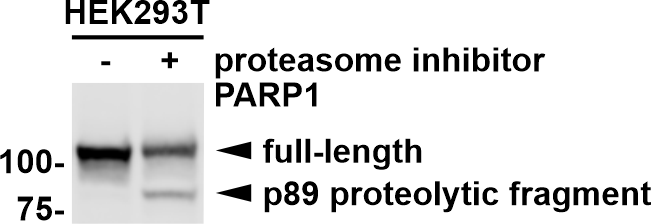 |
FH Ruchi (Verified Customer) (12-09-2022) | The Ab was used for IF at a dilution of 1:100 for staining mice skin wounds. This is a nuclear protein and so required an additional time for fixation (30 minutes in 4% paraformaldehyde) and permeabilization by chilled methanol for 10 minutes. The blocking buffer used was 4% BSA.
|
FH Marina (Verified Customer) (05-30-2022) | In the blot we could detect native PARP1 as well as its cleaved 89 kDa form after PARP inhibitor treatment
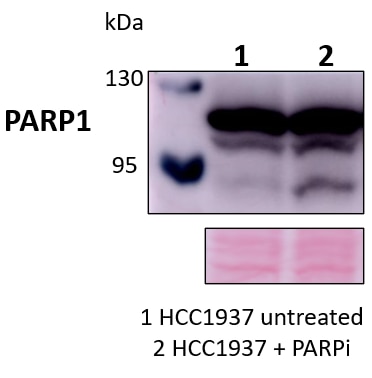 |
FH Huanzhou (Verified Customer) (04-08-2022) | This product works well for WB.
|
FH Azita (Verified Customer) (06-02-2021) | Western blot analysis using PARP1 polyclonal antibody in NSC34 cell line at dilution of 1:500.
|
FH Brandon (Verified Customer) (02-01-2019) | Detected Full-length and cleaved PARP-1. Also detected a smaller fragment in mouse mouse liver tissue.
|
